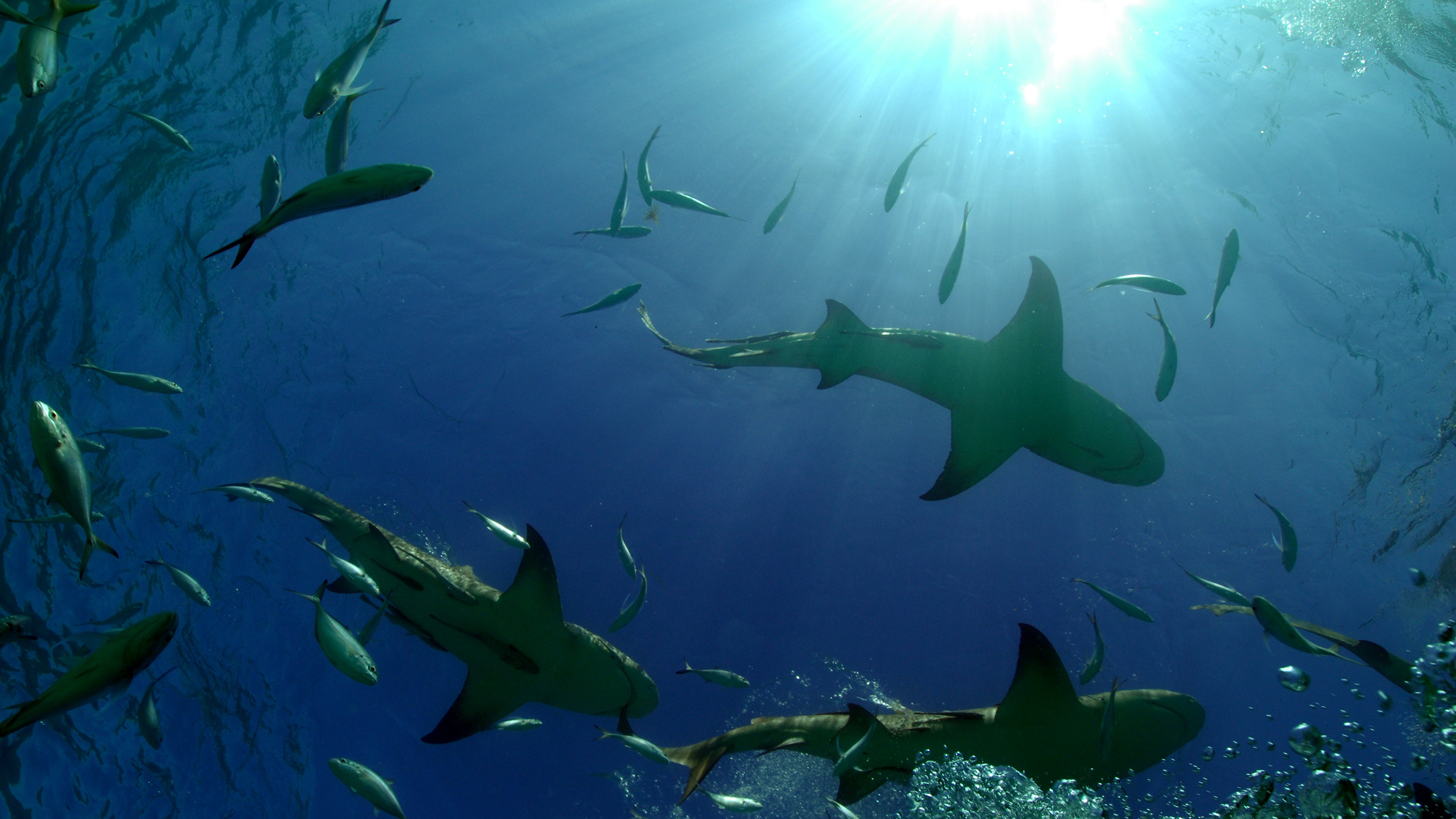My latest book, “Grunt,” has a chapter about shark repellent. During World War II, a need arose for something reassuring to tuck into the lifejackets of men adrift at sea after ditching their plane or abandoning ship. This was the first time American troops had fought on and over shark-hospitable temperate waters, and shark hysteria was sapping morale. Reading a historical article on sharks in Marine Fisheries Review, I came upon a fleeting reference to a secret Navy-funded undertaking called Project Headgear. The author, José Castro, quoted a newspaper piece saying that the goal had been to “convert the shark into a remote-controlled torpedo that could ram a ship while carrying a load of explosives.” It had nothing to do with shark repellents, but I couldn’t bring myself to set it aside. Perhaps just a footnote.

WHAT I LEFT OUT is a recurring feature in which book authors are invited to share anecdotes and narratives that, for whatever reason, did not make it into their final manuscripts. In this installment, author Mary Roach shares a story that didn’t make it into her latest book “Grunt: The Curious Science of Humans at War.”
The project, which ran from 1958 to 1971, had been carried out at three marine laboratories: Lerner (now closed), Mote, and the Scripps Institution of Oceanography. I telephoned Mote (“If you are calling about a tagged snook, press three”), but their archivist could find nothing. Scripps, however, had some Project Headgear files in a special collection called the James Marion Snodgrass Papers. Alas, the Scripps archivist informed me, all files relating to the project remained secret. It’s possible to request a declassification review — José Castro had tried and got nowhere — but with a deadline looming, it seemed like a long shot. And a lot of bother for a footnote. Ruefully, I set Project Headgear aside.
Shortly after my book came out, I crossed paths with Michael Morisy, cofounder of MuckRock, which specializes in helping people make public record requests. In less time than it takes to tag a snook, he tracked down the person who handles Navy MDRs (mandatory declassification reviews). A few weeks later, the Scripps staff emailed me a copy of the Project Headgear Final Report. The report’s coauthors, both now dead, were familiar to me from my shark repellent research: Perry W. Gilbert, shark biologist and former director of Mote Marine Laboratory, and Snodgrass, his gadget man. (Need to measure the force of a shark bite? Then the Snodgrass gnathodynamometer is for you!)
As the news item had indicated, Project Headgear was indeed an attempt to turn sharks into bomb-delivery systems. But no “ramming” was called for. The shark would simply carry the explosives close enough that the target would be destroyed when the bomb detonated. The shark wasn’t so much a “torpedo” as a suicide bomber. Nor was the shark “remote-controlled.” There was no human operator remotely steering the creature by joystick or computer keyboard. Rather, the shark’s headgear would be programmed in advance with a preset course. The equipment could sense compass headings and generate a corrective signal when the shark strayed off course. “Signal” was something of a euphemism. It is elsewhere in the report referred to as a “noxious stimulus” — a 5-to 25-volt shock to one side or another of the shark. To get the creature to swim more to the right, say, an electrode implanted on its left side delivered the shock. The shark would then swim away from the apparent source of the unpleasantness, thereby correcting its course and cutting off the current. Diabolically ingenious!
The shark struck me as an unusual choice. Dolphins are more intelligent and better suited to captivity and training. (The U.S. Navy Marine Mammal Program has for many years trained dolphins to locate sea mines.) Why not use them? Gilbert and Snodgrass were well prepared for the question. The Project Headgear report devotes two pages to the shark’s unique qualifications for the job.
In short, they’re stealthier. Unlike the clicking, whistling, generally garrulous dolphin, the shark is silent. It’s not merely taciturn; it has no organ for making sounds. And it stays out of sight. Sharks don’t leap from the water as dolphins do, nor can you see a shark on sonar, because it has no swim bladder. When sonar “sees” a fish, what it is seeing is the gas in this built-in buoyancy aid. The body of a fish is mostly water; sonar detects mismatches in density, so the rest of the fish — or the entirety of a shark — remains hidden. And because they don’t have a swim bladder, sharks must keep swimming to stay afloat. Thus they’re a good choice for long-distance swims. And lastly, without a swim bladder, a shark sinks when it dies. “Should the mission fail,” as the report put it, the shark would disavow all knowledge of the operation by disappearing into the deep.
As for the dolphin’s superior intelligence, Gilbert and Snodgrass viewed it as a liability. “Man can intellectually dominate a shark — something he finds much harder to do with a porpoise.” A dolphin or porpoise, they seemed to be saying, has a mind of its own. You could not trust it to follow orders. To strap a bomb to a headstrong marine mammal and set it loose in the sea was asking for trouble, for tragedy and demotion and uncomfortable press conferences.
The other reason to use sharks, perhaps the most compelling reason of all, was that the marine labs were already set up for them. Years of Navy-funded shark and shark repellent research meant there were pens and tanks and harnesses and lots and lots of specialized shark know-how — where to procure sharks at a “quantity discount,” what to feed them, how to anesthetize them. Or how to get Navy funding for messing around with them.
The team started out with sharks on tethers. These wire tethers ran from electrodes in either side of the animals’ heads into a Snodgrass Control Box (Model 3). By manually delivering shocks, Gilbert was able to “direct [their] swimming movements at will.” A year later, an “on-board command guidance system” (a.k.a. the Snodgrass Head Unit) was ready for field testing, and a lemon shark recruited. It did not go well. Something about the corrective “signal” seemed to be off. The team tried varying the placement of the electrodes, the frequency and amplitude of the electricity, the duration of the shock. Nothing doing. To be sure the equipment was doing what it was meant to do, “sadist Snodgrass,” as the report phrased it, inserted electrodes into Gilbert’s shoulders and succeeded in steering him around a swimming pool. Eventually the researchers figured out the problem: The headgear was failing to take into account the natural side-to-side yawing of a shark’s head as it swims. The fish was getting zapped while maintaining a steady course. A revised guidance system (with Snodgrass Stimulator 3) solved the problem but was plagued by battery issues. The fourth and final headgear system was field tested in 1967, nine years after the project commenced. Everything at last seemed to be working.
Except the sharks. “We were repeatedly impressed… with the shark’s inability to respond to prolonged electrical stimulation.” Or anyway, to respond the way they wanted them to. If the shock was too weak, the shark ignored it. If it was strong enough to elicit a response, it was the wrong response. It was this response: “radical and even violent movements.” Some were more cooperative than others, but no shark “made good on a constant course” for more than a half hour or three quarters of a nautical mile.
Meanwhile, a second group of researchers had been investigating the load-carrying capabilities of various medium-sized species. “Surprisingly limited,” was their determination. The whole endeavor must have been deeply dispiriting — as dispiriting, that is, as a project set variously in the Bahamas, Coconut Island (Hawaii), Key West, San Diego, and Puerto Rico can be. “We have serious reservations concerning the suitability of a shark as a vehicle for command guidance or for transporting a payload any distance,” reads the glum conclusion of the Final Report, dated June 16, 1971.
It’s a system perhaps better suited to land targets and land mammals. A pack animal — a donkey, say, or a mule — is accustomed to carrying loads and responsive to simple left-right directional irritants, like bits and spurs. Today of course, the U.S. military has drones to do this work. Who needs donkeys?
Homegrown terrorists, perhaps. Live donkeys are sometimes laden with explosives and let loose in a target area. I imagine an on-board command guidance system might come in handy. Project Headgear strikes me as a system whose time may have returned. Is there such a thing as a mandatory reclassification review?
An earlier version of this piece carried an imprecise time reference for scientific attempts to use sharks as living torpedos. The research project unfolded after World War II, not during.
Mary Roach is the author of several New York Times bestsellers, including “Stiff,” “Gulp,” “Bonk,” “Packing for Mars” and, most recently “Grunt.” She has written for National Geographic, Wired, Discover, New Scientist, the Journal of Clinical Anatomy, and Outside, among others, and is a member of the Undark advisory board.










